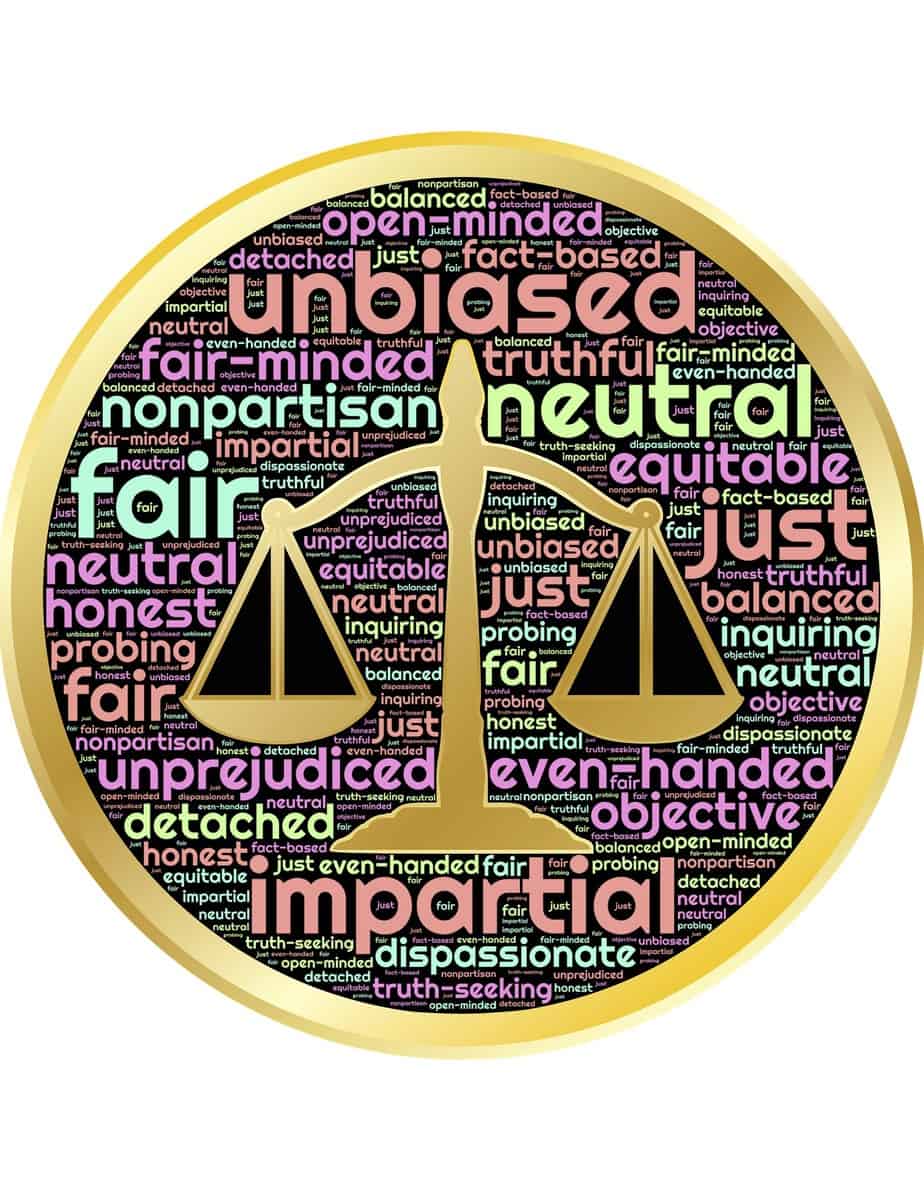MS. PALLAVI & MS. HEMLATA HAVE SECURED 1ST PRIZE IN LAW AUDIENCE'S NATIONAL ONLINE ESSAY WRITING COMPETITION ON INDEPENDENCE DAY 2018.
THE CONCEPT OF SECULARISM[1]
INTRODUCTION:
“When one’s loyalty towards one’s religion comes in conflict with one’s loyalty towards one’s nation, one should lean towards one’s nation and not otherwise.” John F. Kennedy
As John F. Kennedy rightly remarked one’s loyalty towards religion should not restrict one’s loyalty towards one’s nation. Secularism is to be understood and religion is to be practiced all over the world keeping this spirit in mind. The preamble to the Indian Constitution has constituted India into a Sovereign, Socialist, Secular, Democratic, Republic.
India is still struggling to achieve the basic aims set by the Indian Constitution even after more than 70 years of Independence. India has numerous religions, languages and customs. Many religions flourish here, which have their own traditions and beliefs, making India a multi-religious and multi-cultural country.
The first person to use the word “secularism” was George Holyoake, a British writer. He invented the term in 1851 in order to describe his views on promoting a social order which is separate from religion. He succeeds in describing his views without actively dismissing or criticizing the religious belief by the term. The term secularism comes from the Latin ‘saeculum’, meaning an age or era. In the western dictionaries, it is defined as “something which has nothing to do with God and is opposed to religion, and with anything supernatural or transcendental.” It raises the spirit among the citizen that religion will not influence the law that governs their daily lives. Secularism has played a significant role in shaping the state of modern societies and cultures.
Different meanings are attached to the word “secularism” by different nations, societies and people. Some of the interpretations of the word are as follows:
- Separate treatment of religion and state.
- Treating all the persons, belonging to different religion equally by giving religious freedom to all the communities.
- In communist states, it may mean even the absenteeism of religion in the functioning of the state and concentration on the economic or material welfare of citizens.[2]
HISTORY:
Being a multi-religious country India is bound to give religious freedom to everyone and promote equality among the citizens. With this objective in mind, India was declared a secular country. Even the old age philosophy of oneness of religion mentioned in Hindu scriptures like Upanishads preaches ‘Sarva Dharma Samabhava’ which means respect for all belief systems. Religion has flourished with Indian civilization and everything in India revolves around religion. In Feudal India, there was almost complete religious tolerance and people from different religions respect each other’s religion.[3]
Secularism entered India from the west. In the west, secularism is the detachment of state from any particular religion. The concept of “secular” was first used in Europe where the church had complete control over all types of properties and people were not permitted to use property without the consent of the church. This practice was opposed by some intellectuals who came to be known as ‘secular’ meaning ‘separate from church’ or ‘against church’.
The invasions and incursions from Aryans to Mughals kept adding to religious, cultural and linguistic pluralism and with every invasion and incursion, Indian society became more and more complex and rich British colonialism too contributed to the cultural and religious multiplicity of the country. Under the British rule in India religion became an inseparable part of political and social life and Secularism became more prominent. Separate laws for Hindus, Christians, Sikhs, Muslims and other religious communities were imposed by the British government. Different religions are governed by different personal laws till date owing to the divide and rule policy of the Britishers.
Secularism was the main objective of Indian political leaders at the time of Independence. After the partition, minority communities, like the Muslims are to be assured that they would not face discrimination in any way. With the gaining of Independence, a process of deepening as well as broadening of secularism was witnessed. Measures like the declaration of India as a secular state, the Constitutional recognition of the equality of all citizens, the introduction of universal adult suffrage, etc. broadened the process of secularism.
After Independence, India was declared a secular country and the freedom to follow any state religion was given to the people of India. The Indian state did not have any state religion would remain ‘secular’ in the Constitution. After independence, the term was used in different contexts. Gradually, the preaching of communal ideology was started by most political leaders which paved the way for India becoming a combination of secularism and communalism.
The definitions given by the renowned personalities reflect the diverse views about secularism. As per Dr. S. Radhakrishnan, Secularism does not mean irreligion or atheism and lays stress on the universality of spiritual values which can be attained by a variety of ways.[4] While Mahatma Gandhi view is “If I were a dictator, religion and state would be separate.” According to him, his religion is his personal affair and the state has nothing to do with it. The state will not look into anyone’s religion but will look after secular welfare, health, communications, foreign relations, currency, etc.
During the early 80’s secularism was overshadowed by communalism and different political parties started using the word “pseudo-secularism”. The incidents which prove the superiority attributed to communalism in India are – militancy in Kashmir and Punjab, the Babri Masjid controversy in 1992, the 1984 anti-Sikh riots, etc. Communal forces often lead to the disintegration of secular policies in India by oppressing the minorities. The biggest questions on the definition of “secularism” in present-day India are the communal and religious clashes.
KINDS OF SECULAR STATES AND INDIAN SECULARISM:
Generally there are three kinds of secular states The Secular States of the Western Type in which the government remain unbiased in the matters related to the religion; The Communist States claiming to be “secular states” are in fact religion less states; Secularism in Multi-religious States like India – imitation of the Western model of secularism by making certain modifications. For example, secularism in India is expected to establish harmony between religious communities and forge national integration. Whereas in the West, the word secular implies mainly three things:
- Religious freedom,
- Equal citizenship to each citizen irrespective of religion, and
- The severance of religion and state.
There is equality under the law, and people are subjected to the same laws, in the West. Whereas, in India, the word secular means all religions will be treated equally and does not imply severance of religion and state. Political authority is asserted by religion in matters of personal law in India. An individual’s religion decides the personal law applicable to him.
Secularism in India can be differentiated from the French concept – laïcité which demands absentation of religion in governmental institutions, as well as of institutions in religion. In India, financial support it provides to religious schools by the government and at the same time, religious law is accepted over governmental institutions.[5]
In India, many incentives have been created for various religious denominations to impart religious education by starting and maintaining schools. These denominations receive significant financial support from the government. The government regulates and administers the historic Christian religious institutions, Buddhist monasteries, and certain Hindu temples by providing them with financial support. This direct involvement government in various religions differs from Western secularism.[6]
The concept of secularism though differs from nation to nation but it is marked by some common characteristic features in all the countries which are as follows:
- A decrease of Religionism,
- Religious Neutrality,
- It does not establish, recognize or endow any religion.
- It assures full religious freedom to all of its citizens and treats alike adherents of all religions.
- It is not guided by the dogmas of any specific religion or consideration of otherworldly happiness.
- Aspects of social life are differentiated by the growth of secularism and it separates the economic, political, legal and ethical questions.
- Rationality is another hallmark of secularism and the old customs and traditions are followed only if they make a rational appeal.
- Another feature of secularism is the scientific discoveries which have replaced the religious explanations for many natural events and social problems.
- Secularism always deals with the known world whereas theology interprets the unknown world.
- Secularism is not based on the spiritual beliefs and values of any peculiar religion and promotes humanitarian values.
- Secularism does not recommend state religion and gives equal preference to all religions.
- Secularism is neither against Religion nor against Mortality.
- Secularism is also an Aspect of Modernization.
- Secularism can succeed only when the cultural environment is favourable to it.
The causes of secularism in India includes Western education, western culture, , Adoption of a secular attitude towards occupations, marriage, and other human activities, Development of the Means of Communication and Transport which led to the inter-mixing of people by increasing physical mobility, The various social and religious reform movements started by Indian leaders like Raja Ram Mohan Roy, Sir Syed Ahmed Khan, Keshav Chandra Sen, Swami Dayanand, Devendranath Tagore and Mahatma Gandhi also encouraged the process of secularism in India.
The housing shortage, the economic problems, education, urban, fashion, political and social structure, individualism, the influence of western culture on urban life led to the secularism of the urban outlook. Various laws enacted by the Britishers like the Caste Disabilities Removal Act, 1850, Special Marriage Act, 1872, Widow Remarriage Act, 1856, attacked the orthodox beliefs of the Indian people. In modern times the Hindu Marriage Act, 1955, the Hindu Succession Act, 1956, the Hindu Widow Remarriage Act, 1856, the Maintenance Act, the Adoption of Children Act have led to the secularism of the Hindu institutions of marriage and family.
The authority of religion over conditions of marriage and divorce has markedly declined. Inter-religious marriages are increasing in number. The Indian culture has assimilated new ideas under the impact of western culture. Cultural activities began to be interpreted secularly instead of religiously. The spheres of literature and art also show the impact of secularism and it is propagated by all publicity media.
Every political party and every political leader speaks about secularism. Under the influence of secularism, there appears to be a marked change in the position of girls and women. Earlier girls were not permitted to step out of the house because of the male dominating society. The introduction of the ideals of equality and liberty permitted girls to pursue careers of their choice
SECULARISM AND THE INDIAN CONSTITUTION:
The spirit of our constitution is “secular” though originally the word “secular” did not occur in our constitution. The Constituent Assembly rejected a motion moved by Brajeshwar Prasad from Bihar to have the words “secular” and “socialist” included in the Preamble. To fully understand secularism in the Indian context, the Constitution is to be read in its entirety. In the Constituent Assembly, there existed a conflict between two different visions of secularism: one called for a complete separation between state and religion, and another demanded equal treatment of all religions. [7]
The Constitution [42nd Amendment] Act, 1976 added the term “secular” to the preamble of our Constitution. Accordingly, now India is a “Sovereign, Socialist, Secular, Democratic, Republic.” The Constitution of India made a notable contribution to Indian life by accelerating the process of secularism. The term “secular” explains that the State treats all religions equally, and no state religion is recognized by the state.[8] It neither promotes nor practices any particular religion, nor does it interfere with any religious practice. The state is not worried about the relationship of men with their God but only concerned with the relationship of men with other men.
Secularism is our constitutional commitment. The spirit of our constitution is secular and it gives special protection to the minorities. The concept of Secularism can be inferred from the following Articles of the Constitution:
- Article 15(1) and 15(2) which prohibits discrimination on grounds of religion.
- Article 25(1) guarantees freedom of conscience and the right to profess, propagate and practice religion.
- Article 27 bars compelling anybody to pay any taxes for the task of promoting or maintaining any particular religion or its denomination.
- Article 30(1) provides that all minorities shall have the right to establish and administer educational institutions of their choice irrespective of their religious and linguistic basis.
The Constitution ensures equal freedom to all religions. It is declared that the religion of a person is unconcerned about the matters relating to the social and economic welfare of the people, which matters can be regulated or restricted by law.[9] The Supreme Court in the case of St. Xavier’s College v State of Gujarat[10] explained that secularism is neither Anti-God nor Pro-God; it treats alike the devout, the agnostic and the atheist. It eliminates God from the matters of the State and ensures that no one shall be discriminated against on the ground of religion. Every person is free to mould or regulate his relations with his God in any manner. He is free to go to God or to Heaven in his own ways. And worshipping God is left to be dedicated by his own conscience.
Secularism was already implicit in the provisions contained in Articles 25 to 30 of the Constitution.[11] In the case I.R. Coelho v State of Tamil Nadu[12] it has been held that secularism is a matter of conclusion to be drawn from Articles confirming fundamental rights. These provisions emphasize on the different aspects of the secularism of State in India. Literally, the term ‘secular’ means non-religious or non-ecclesiastical and the expression ‘secularism’ means a state of keeping away from religion or unconcerned with religious ethics or equi-distance from all religions. In India, the State is unbiased in the matters of religion.
The Honorable Supreme Court in the case of S.R. Bommai v. Union of India[13] noted that notwithstanding the fact that the words were added in the preamble of the Constitution in 1976 by the 42nd Amendment, the concept of secularism was very much embedded in our constitutional philosophy. By this concept what was implicit was made explicit. As per the provisions of the Constitution, the Indian State cannot establish, recognize or patronize any religion. It does not discriminate against its own people in the name of religion. Hence India is called a “secular state.”
The State is enjoined to accord equal treatment to all religions and religious sects and denominations, the Court observed, this tolerance by the state, of religion or religions, “does not make it either a religious or a theocratic state.” The Court emphasized that the Preamble and Articles 25, 26, 29, 30, 44, 51A, 14, 15, 16 by implication, prohibited the establishment of a theocratic state and prevent the state from either identifying itself with or favoring any particular religion or religious sect or denomination.
In the case of Valsamma Paul v Cochin University[14], the apex court emphasized that inter-caste marriages and adoptions were two important social institutions through which “secularism” would find its fruitful and solid base for an egalitarian social order under the Constitution of India. “Secularism”, the Court said, was a bridge between religions and a multi-religious society to cross over the barriers of their diversity.
The essence of Secularism in India is the recognition and preservation of the different types of people, with diverse language and different beliefs and placing them together so as to form a whole united India. [15]
CONCLUSION:
The spirit with which the concept of secularism was introduced can be gathered from the words of Mahatma Gandhi when he said he does not want India of his dreams to develop one religion, but want it to be wholly tolerant. The strength of secularism has been tested in India on various occasions and India is many facing challenges to keep secularism alive.
Indian politics are subject to a lot of criticisms. Heated discussions and debates are still going on about the concept of secularism which is still inconclusive. The theory of secularism has become highly controversial and is under heavy attacks from all sides. Political parties declaring themselves to be “secular” prove to be highly communal. The faith of the people in secularism is slowly diminishing as even a single party is not sincerely committed to this ideology in its actual practice.
Secularism though, a worthy ideal has become a ploy to disgrace the rival and an election-winning strategy for today’s leaders who practice the worst form of religionism. Older leaders like Nehru spoke of secularism, as ensuring equal justice and equal rights for all castes, communities and creeds.
The practice of secularism has been encountering many problems in India. Several impediments come in the way of effectively implementing the principles of secularism. As C. Subramanyam pointed out, “Religion when used for political purposes degenerates itself into communalism,” the greatest hurdle for practicing secularism in India is the problem of communalism. The conflict or antagonism or tension between religious communities usually leads to and often anticipates a sense of fear, superstition and hostility.
The greater danger to secularism in our country is that communal political parties are allowed to exist and openly participate in the political processes which have a greater commitment to their religious communities. India claims to follow secularism on the one hand, and on the other, enters into agreements and makes compromises with communal parties. Parties select their candidates taking into consideration the religious composition of various constituencies and practice religious bigotry. Even at the time of forming the ministries, adequate representation is given to every powerful community. Thus, secularism has become a mockery at the hands of the political leaders.
India is suffering from the problem of “Vote-Bank’ Politics as is rightly summed up by Ram Ahuja when he said secularism for political parties implies the creation of a vote bank which comprising, the Scheduled Castes, Muslims, the Scheduled Tribes and OBCs. Sincere commitment to secularism is found in no political party.
Failure to introduce a common civil code throughout the nation has caused disharmony. Though the Directive Principles of the State Policy has stressed the requirement to have a Common Civil Code so far we have not been able to have one, due to lack of support from the minorities. As long as it is not introduced, the differential treatment of people on the religious grounds would continue and achievement of national integration becomes impossible. The tendency of the government to interfere in the internal administration and management of the religious institutions is very much against the spirit of secularism.
Secularism is very much distorted in its practice and the idea that Indian society has become secular is easy to grasp but complex to demonstrate. No political party which ruled the country was successful in implementing the principles of secularism. Parties even after accepting secularism as one of their basic political ideologies have not remained sincere to its philosophy. Hence, secularism still continues to be a topic of heated discussions and endless discussions are going on even today about the very secular nature of the Indian polity. The discussions point out two important things:
- The concept of “secularism” has not been properly and unambiguously explained;
- Though India has been declared as a “secular state” constitutionally, the governments which have ruled over the country have failed to develop or to shape India as a “secular state” in the real sense of the term.
The politician’s top priority is the number of votes secured in an election; Secularism has become pseudo-secularism in their hands. The present crisis in India is due to the overemphasis on secularism and politicization of religion. Karl Marx, the father of communism, has rightly called religion “the opium of the masses.” The influential religious heads are owed by the political parties to get the votes of a specific religious group. The people of India have not yet become secular in their outlook.
The process of secularism should neither lead to the devolution of religious values nor should not put forward a challenge to the religious plurality of India. What is needed today is a new vision and openness of mind towards the religious faiths so that people can appreciate other faiths and religious guarantee freedom is guaranteed to them.
[1] AUTHORED BY: MS. PALLAVI, B.COM.LL.B (HONS), 4TH YEAR STUDENT AT UNIVERSITY INSTITUTE OF LEGAL STUDIES, PANJAB UNIVERSITY, CHANDIGARH: CO-AUTHORED BY: MS. HEMLATA. B.A.LL.B (HONS), 4TH YEAR STUDENT AT UNIVERSITY INSTITUTE OF LEGAL STUDIES, PANJAB UNIVERSITY, CHANDIGARH.
[2] Dr. Paravathy A.A., “Secularism Vs Communalism” in the, “Third concept” – July 2003, 28.
[3] Ramandeep Kaur, Secularism in India, COMPARE INFOBASE LIMITED (April. 11, 2013, 5:00 PM), https://www.mapsofindia.com/my-india/government/what-is-a-secular-india.
[4] Prof. Paravathy A.A., SECULARISM AND HINDUTVA: A DISCURSIVE STUDY, 15[1994].
[5] Tim King, Secularism in France, PROSPECT (March, 20, 2004, 6:00 PM) https://www.prospectmagazine.co.uk/magazine/secularisminfrance.
[6] P. Ishwara Bhat, LAW AND SOCIAL TRANSFORMATION, 22 (2009).
[7] supra note 3.
[8] M.P.G Nair v. State of Kerala, A.I.R. 2005 S.C. 3053 (India): Bal Patil v Union of India, A.I.R 2005 S.C. 3172 (India).
[9] Dr. Narender Kumar, CONSTITUTIONAL LAW, 35 (2016).
[10] A.I.R. 1974 S.C. 1389 (India).
[11] Bal Patil v. Union of India, A.I.R. 2005 S.C. 3172 (India).
[12] A.I.R. 2007 S.C. 861 (India).
[13] A.I.R. 1994 S.C. 1918 (India). The same views were held by the five-judge bench of the Supreme Court in M.Ismail Faruqui v. Union of India, A.I.R. 1995 S.C. 605 (India).
[14] A.I.R. 1996 S.C. 1011 (India).
[15] Hinsa Virodhak Sangh v. M.M.K. Jamat, A.I.R. 2008 S.C. 1892 (India).



